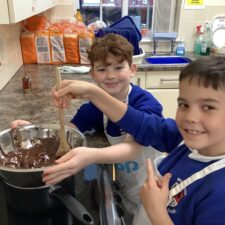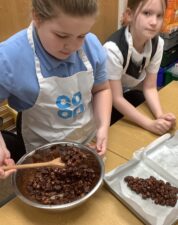“Design and Technology should be the subject where Mathematical brainboxes
and Science whizzkids turn their bright ideas into useful products”
James Dyson
Design and Technology at Mersey Park
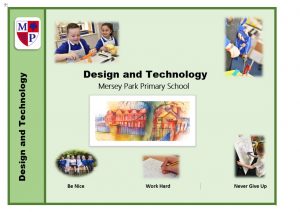
Please click the link below to find out about how we teach D&T at Mersey Park.
Design and Technology Report to Governors
Design and Technology report for Governors 2025
Long Term Overview

Autumn Term
Foundation 1
In Foundation 1 the children start to explore how to measure and combine food together to bake. They also begin to develop their fine motor skills, using their imagination to think what they can do with different materials. The children use blocks and other construction toys to make simple models and enclosures sometimes working collaboratively with their peers.
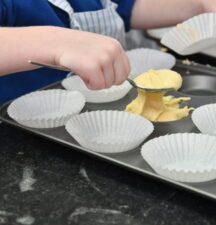
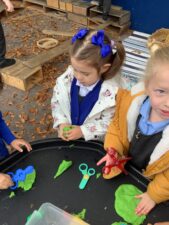
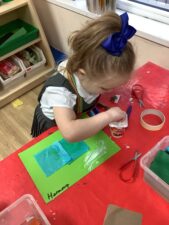
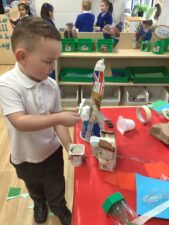
Foundation 2
In Foundation 2 the children continue to develop the basic skills needed to join materials together. They use stories as a starting point, for example, ‘Pumpkin Soup’ making a quilt for duck using a variety of materials and joining techniques such as pipe cleaners, glue and tape to see what works well. They begin to evaluate their work and return to it to improve it. The children become increasingly skilled with block play, creating detailed structures with a purpose in mind. The children also chop seasonal vegetables including, carrots, parsnips, potatoes and leeks to make Autumnal vegetable soup.
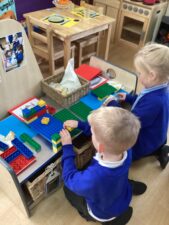
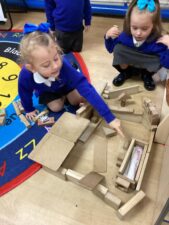
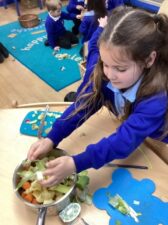
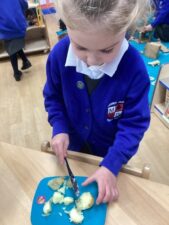
Year 1
The children develop their sewing skills as they make hand puppets as part of our Toys topic. They research, design, make and evaluate their puppets, gaining confidence with the use of a needle and thread to join the material together.
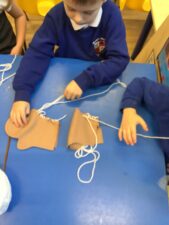
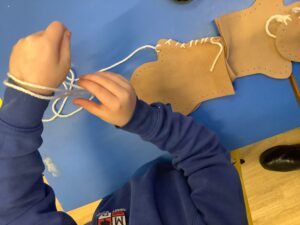

Year 2
In Year 2 the children make potato salad using potatoes they planted in Year 1 and chives they planted in Year 2. They build on the skills learnt in Year 1 by researching the ingredients to include; slicing herbs and potatoes; combine flavours to make a tasty product and evaluate their potato salad.
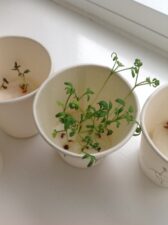
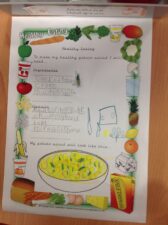
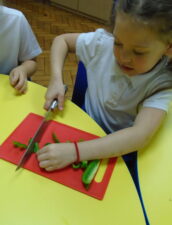
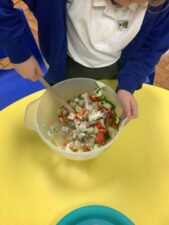
Year 3
In Year 3 the children learn about levers and linkages. They explore how different levers and linkages work then use these to design their own London landmark picture with moving parts. Once planned the children create their moving picture. Finally they evaluate their product to focus on what worked well and what could be improved next time.
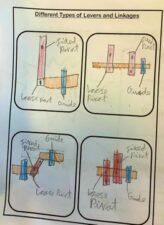
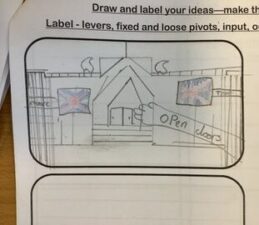
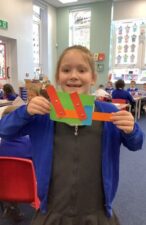
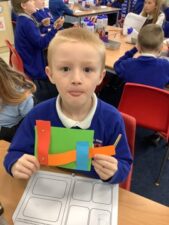
Year 4
In Year 4 the children make a delicious ragu and tagliatelle linked to their topic on the Romans in history and their research about Italy. They prepare different vegetables, practising their chopping and dicing skills. They then have to sauté the vegetables and add the meat.
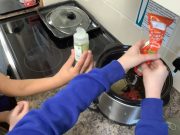
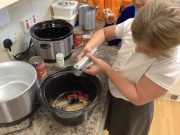
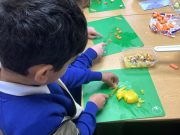
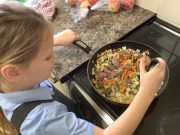
Year 5
In Year 5 the children consolidate their learning on healthy eating and nutrition. They begin their project by taking part in market research of popular types of gyros, linked to their history topic Ancient Greece and their knowledge of Greek culture. They build on their preparation skills and explore using different herbs and spices to flavour their gyros.
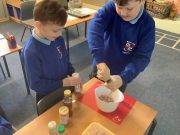


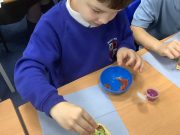
Year 6
In Year 6 the children build on the skills developed through school to plan, build and evaluate different products. In their cooking and nutrition unit they investigate the health benefits of different foods then create their own healthy main course. They continue to develop their use of knife skills cutting both vegetables and meat as well as cooking the foods themselves on the hob.
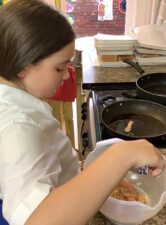
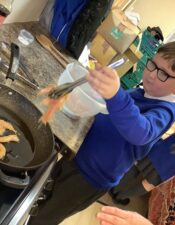
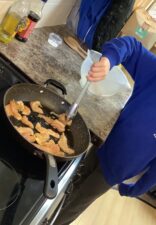
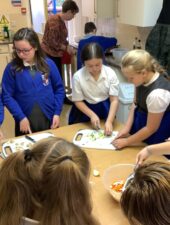
Spring Term
Foundation 1
In Foundation 1 in Spring the model making gets bigger and better. They enjoy finding different ways to join materials together such as glue, tape and string. They continue to learn how to decorate their creations to good effect using tissue paper and paints. They build rockets to fly to the moon and use these to tell stories and sing songs.
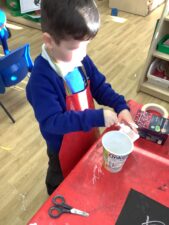
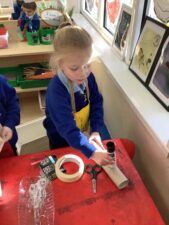
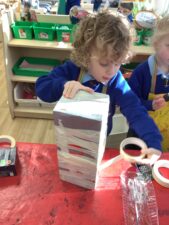
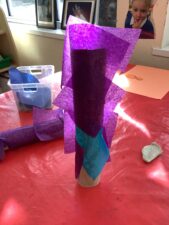
Foundation 2
In Foundation 2 they love watching videos of Chinese Lion and Dragon dances on the internet. They look carefully at them, then design and make their own lions and dragons. They enjoy using their cutting and joining skills to make fabulous Chinese lanterns and lucky envelopes. When the weather is cold outside they know their ears get cold in Foundation 2 so they become designers. They look at some earmuffs and design and make their own. They have to make sure they fit right over their ears!
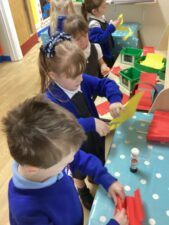
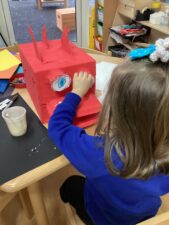
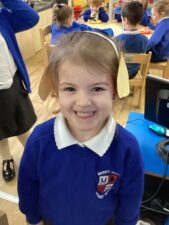

Year 1
In Year 1 the children plan to make their own sandwiches, choosing their own fillings and writing instructions on how to make them. They then make them for a teddy bear’s picnic. The children think about the health and safety of preparing food and their workspace, then spread butter with a knife and add their toppings on to the sandwich.
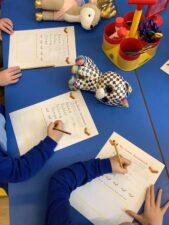
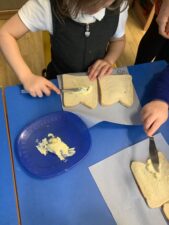
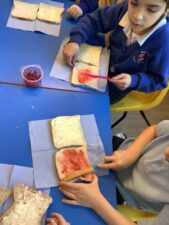
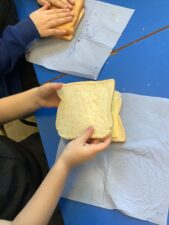
Year 2
In Year 2 children learn how to evaluate products already available to find out how they work and choose the best parts to magpie. They then use a design, create and evaluate process to make their own moving fire engine. In doing this they experience how to use equipment safely while using the saws and the drills; how to create a frame that is secure and how to add reinforcement to strengthen it further. The children then get the opportunity to test their vehicle and evaluate which bits work well and how to improve their designs next time.
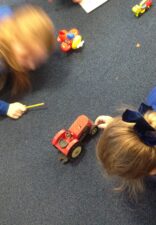

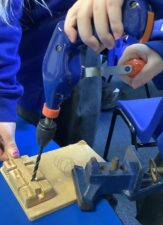
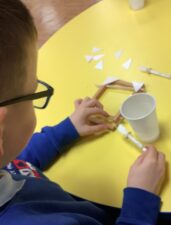
Year 3
In Year 3 the children develop their ability to follow a recipe. They investigate traditional foods from the UK and choose to make one of them, this year they chose shortbread. The children write a recipe, weigh out all the ingredients and mix them together in the right way before putting them into the oven. The children are then able to try the shortbread once they are baked and evaluate them.

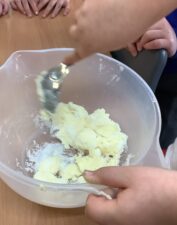
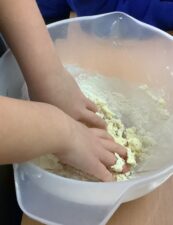

Year 4
In Year 4 the children design and make their own Edward Tulane rabbit toy, after, researching how teddy bears are made, including deconstructing and shared reading about the history of the teddy. The children cut and sew their toy, after being given a step-by-step guide and safety talk. They sew on button eyes and a sew a nose and mouth; do a running stitch around the edge; stuff their toy; add a ribbon and glue on a bob tail. They then evaluate their product.
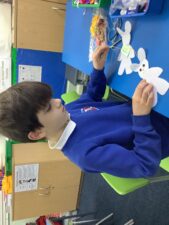
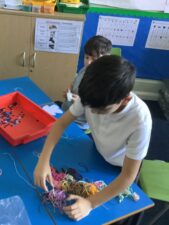
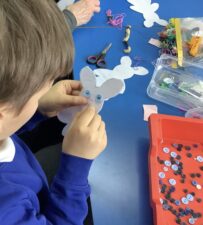
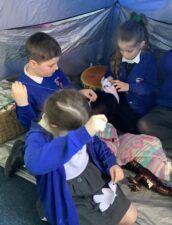
Year 5
In Year 5 the children develop their knowledge of textiles to design and make a water bottle carrier. They plan their work in a booklet considering a design criteria, enhance their skills of cutting with precision to make each piece of the fabric needed and then carefully sew together the fabric. They are able to test their product out and then evaluate whether it is worked and what they will change next time.
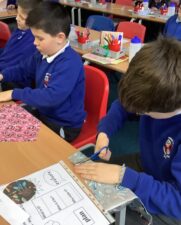
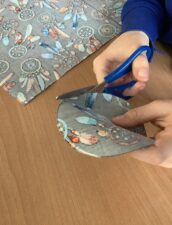
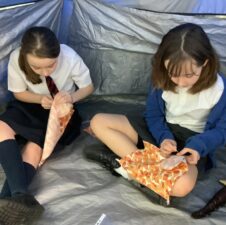
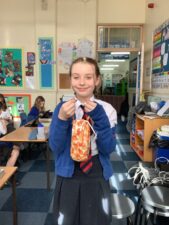
Year 6
In the Year 6 structures unit the children use their previous knowledge to ensure they plan and build a bridge that is stable. They are able to combine different techniques they have learnt for fixing the materials together. They design and make their own bridges. Then they create their own measurements for their bridge design. Using a jinx box and pulley design they create their own draw bridges.
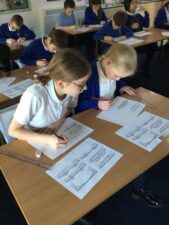
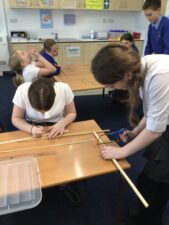
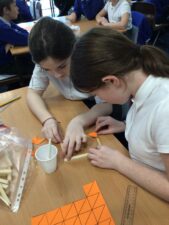
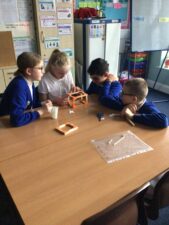
Summer Term
Foundation 1
In Foundation 1 the children find ways of joining wood together to make new friends for Stick Man.
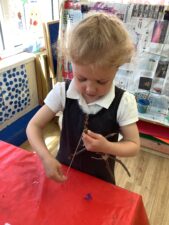

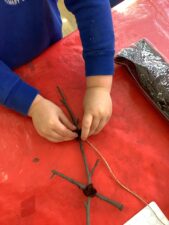

Foundation 2
In Foundation 2 the children make their own bags and rucksacks, cutting and joining carefully. They decide the best material would be plastic so the bag is waterproof as well. They check the bag is strong enough and make adaptations as necessary. After listening to the story of, ‘Jack and the Beanstalk’ the children decide to make a ladder to help the Giant get back to his castle in the clouds. They choose lolly-pop sticks or art straws to make their ladder joining it carefully with their choice of tape. The children make eye patches as they pretend to be Pirates.
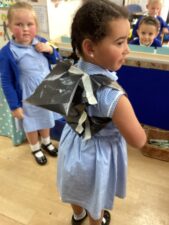
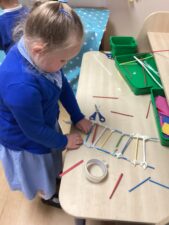
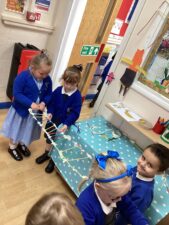
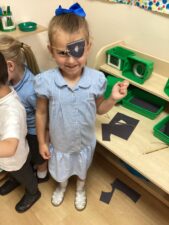
Year 1
In Year 1 the children design and make their own seaside picture using levers. They plan their own seaside design, work out which part is going to move and how to join these together and then make it.
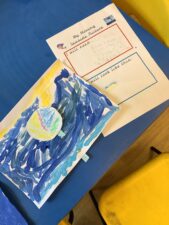

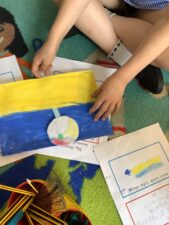
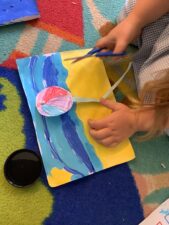
Year 2
In Year 2 the children design and make their own minibeast finger puppet after, researching other animal finger puppets and how they are made. They take part in shared reading about the history of finger puppets and how they are made. The children then draw the body shape onto felt, cut and sew their toy, after being given a step-by-step guide and safety talk. They add detail to the body such as wings, antenna and stripes. They then evaluate their product.
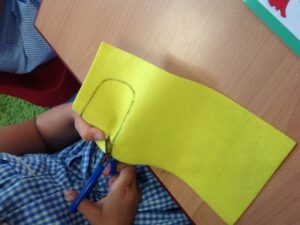
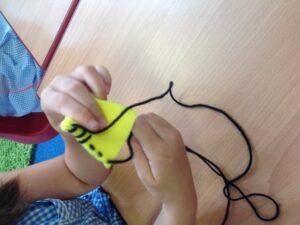
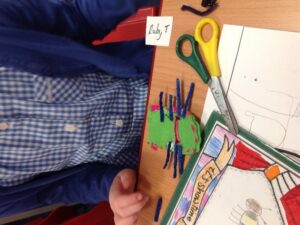
Year 3
In Year 3 the children paper mache to create puppet heads using masking tape, PVA glue and newspapers. They use felt to design and sew their puppets together.
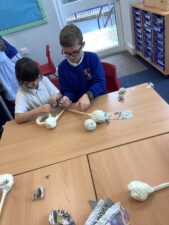
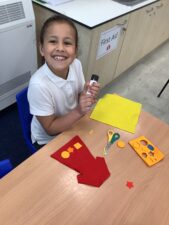
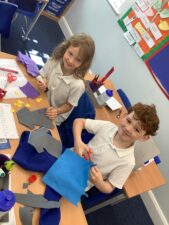
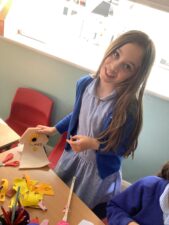
Year 4
In Year 4 the children practice using the DT equipment and make a box to house electrical equipment for a pressure pad alarm. They practise the skills of measuring, sawing and joining to create a structure suitable for their product.
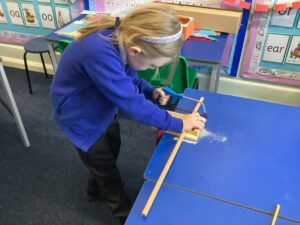
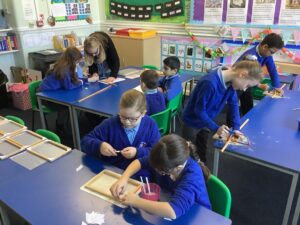
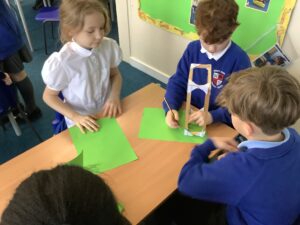
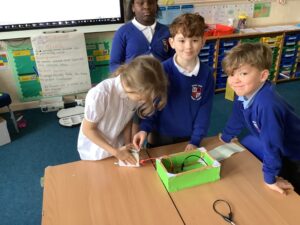
Year 5
In Year 5 the children create their own cam toy design, after researching what a cam mechanism/ toy is and how it is constructed and shared reading about wooden structures and how to give them strength. The children then use tools to construct the wooden frame, after being given a step-by-step guide and safety talk. They make a simple cam mechanism to incorporate into the frame and personalise their box with a background scene and pop up character design.
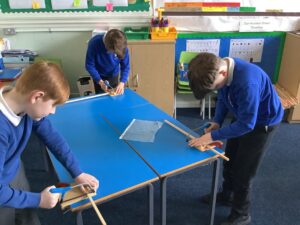

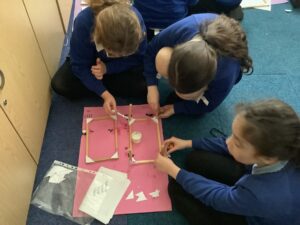
Year 6
In Year 6 the children design and make their own pencil case, after researching how different pencil cases are made, including deconstructing a pencil case and shared reading about the history of school stationery. The children then create their own pattern, cut and sew their case, after being given a step-by-step guide and safety talk. They revise using running and whip stitches and learn how to do a blanket stitch; add a fastening of their choice and add detail with embroidery/applique.
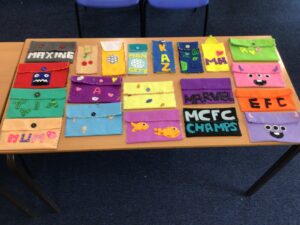
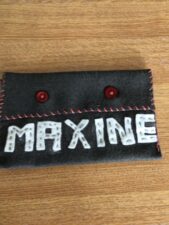
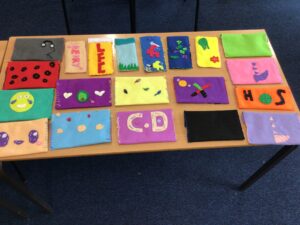
Extra Curricular Clubs
The Year 4’s thoroughly enjoy ‘Cooking Club’. They make chocolate brownies, chicken fajitas and shortbread biscuits in time for Christmas.

